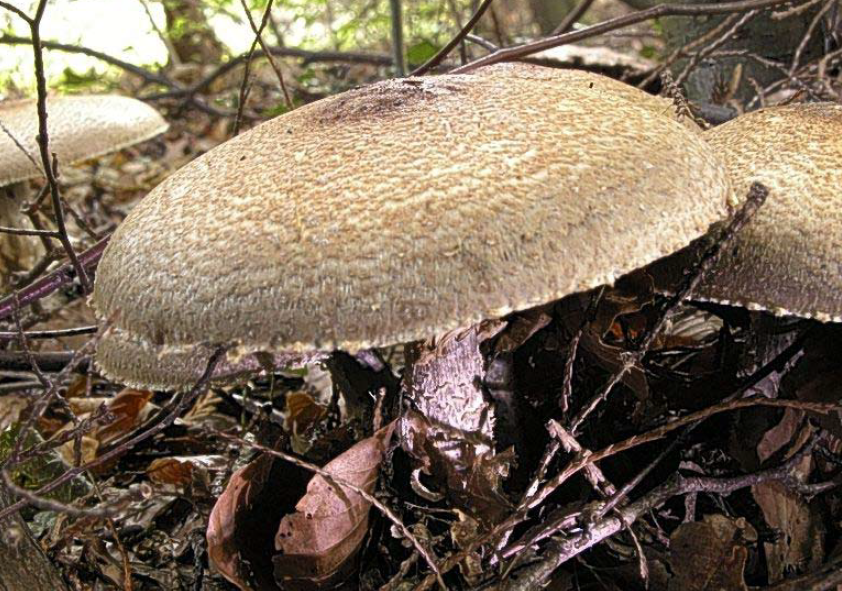Nature Studies: My unexpected first encounter with The Prince in the forest
I was taken aback by its size and its exquisite, fresh aniseed fragrance

Well I thought I knew all the best-known wild mushrooms, the edible ones, that is – cèpes and chanterelles and field mushrooms and morels and horns-of-plenty – but I have to confess I had never heard of The Prince. Yet there it was, under a fir tree in Savernake forest. Colossal. The size of a saucer.
I mean, a big saucer.
Wow.
It’s that time. The mushroom season is in full swing now, and if you venture into somewhere like Savernake, near Marlborough in Wiltshire, you will find the damp ground littered with the fruiting bodies of fungus after fungus – the apples of these invisible underground trees – only a few of which, or course, are edible. I went this week with Peter Marren, one of Britain’s foremost mycologists or fungus experts, whose wonderful book, simply entitled Mushrooms, I wrote about here a year ago, and the forest’s dark depths were at once lit up by his luminous knowledge.
The most visible fungal sights, of course, were the fly agarics – the bright scarlet toadstools with white spotted caps which traditionally provided seats for garden gnomes – and the spectacle of those was splendid, but there was much more: the range of species was astonishing, although you needed someone like Peter to appreciate it properly. There were broad clusters of honey fungus and sulphur tuft growing on dead wood, both vivid yellow-brown – “gardens of decay”, Peter said – and gatherings of puffballs which shot out a puff of spores if you touched them with a twig (and Peter pointed out that normally what causes the puffing is raindrops, and in a heavy shower there can be so many tiny explosions that it looks like an artillery barrage in miniature). In an old churchyard by the edge of the forest we found a profuse display of waxcaps, which, although not edible, are increasingly appreciated by mushroom enthusiasts for their pastel colours in the grass – we saw golden waxcap, snowy waxcap, scarlet waxcap and blackening waxcap (which starts off the colour of copper and turns very dark), although there was no sign of the prettiest, the pink waxcap, also known as “the ballerina” because it resembles a dancer in a pink tutu.
But it was the edibility question which most engaged me, not least as wild mushrooms combine the two extremes of being delicious and fatally poisonous. Peter encouraged me to taste a few unconventional things I would never have dared touch myself, such as fragile brittlegill, which was as hot as vindaloo, and beech brittlegill, which was even hotter, although he advised me against milkcap, Lactarius blennius, which he said was hotter than all of them (“it’ll blow the back of your head off”).
More in my comfort zone were the wild mushrooms beloved of chefs, such as cèpes (the precise English word is boletes; the old name, penny buns). We started to encounter them when we joined up with Rosemary, a local friend of Peter’s who was off on some serious gathering, wicker basket over her arm, and who knows the forest intimately.
She did not bother with oyster mushrooms (which you can stir-fry) and beefsteak fungus, which is also edible and does look for all the world like a grilled sirloin, but she pounced on the big fat cèpes when we came across them in the darkest part of the forest. And then, eventually, she and Peter let out a cry, and we had found The Prince – Agaricus augustus.
As I said, I had never heard of it, although I now realise it is one of the most prized of all wild mushrooms in culinary terms, up there with the legendary Caesar’s mushroom (which is found only in southern Europe).
I was taken aback by its size and by its exquisite, fresh aniseed fragrance. And I was even further taken aback when, at the end of our foray, Rosemary made me a present of it.
I gushed my thanks. “How would you cook it?” I asked her.
“I would fry it,” Rosemary said.
“As a starter?”
She smiled, and there, with the fruits of the autumn earth all around us, she put me right.
“As a celebration.”

Join our commenting forum
Join thought-provoking conversations, follow other Independent readers and see their replies